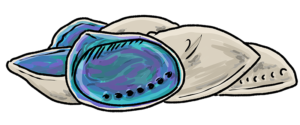Umbrella Terms

Umbrella terms group together more specific variations into a broader category.
People may not be familiar with umbrella terms, or feel comfortable using them.
- Variations in sex characteristics
- Differences of sex development
- Intersex
- Ira Tangata or Takatāpui
Here are some of the variations:
- Congenital adrenal hyperplasia (CAH)
- Androgen insensitivity syndrome (AIS).
Can be partial (PAIS) or complete (CAIS) - Mayer-Rokitansky-Kuster-Hauser syndrome
(also called MRKH, Müllerian agenesis and vaginal agenesis) - Gonadal dysgenesis (partial and complete)
- Swyer syndrome
- 5-alpha reductase deficiency
- Hypospadias Epispadias
- XY cloacal exstrophy
Other Terms

Bias is where we hold a preference for something or someone over another often resulting in prejudice and judgement. We are often unaware of our bias and at other times very aware.
Gender refers to the characteristics of women, men, girls, boys and nonbinary people that are socially constructed. This includes norms, behaviours and roles associated with being a woman, man, girl or boy, as well as relationships with each other. As a social construct, gender varies from society to society and can change over time.
Gender binary refers to the social construct that there are only two genders, male and female rather than viewing gender as a spectrum than is inclusive of those who are nonbinary.
Gender stereotypes refer to the norms that are held within society about what it is to be a male, female or nonbinary. For example, females have long hair, men have short hair and nonbinary might have either. Often these are out dated and many qualities are just human but become gendered as a result of societal norms. For example, only females can be sensitive when in fact any person is capable of being sensitive. Sensitivity is a human quality, not a gendered quality. Another common one is blue is for boys and pink is for girls. What we know is that pink and blue are simply colours.
Innate – born with, for example eye colour.
Ira tangata (Ira – Genetics/whakapapa, Tangata – Personhood) is a Māori reference for Identity and Whakapapa. This term acknowledges in te reo that Māori are Indigenous first and not defined by any one characteristic or variation. The term comes from Tu Chapman, of Ngāti Kahungunu and Ngāti Awa descent and is the co-chair of Intersex Aotearoa.
Norms are constructed expectations often reinforced by societal rules, often these can be entrenched and out dated (similar to stereotypes). Norm critical means challenging societal norms to be more inclusive of difference and diversity so as to not label those that fall outside the norm as “abnormal.”
Sex generally refers to the binary notion of male and female bodies determined by their genitalia, gonads, sex chromosomes and hormones. There are variations that can occur that don’t fit into the binary and these are referred to as variations in sex characteristics (VSC). Also known as intersex or Differences in Sex Development (DSD).
Takatāpui – traditional Maori term meaning “intimate companion of the same sex”. It has been reclaimed to embrace all Maori who identify with diverse sex characteristics, genders and sexualities such as whakawahine (trans women), tangata ira tane (trans men), lesbian, gay, bisexual, transgender intersex and queer. These are often grouped under the term “rainbow communities”.